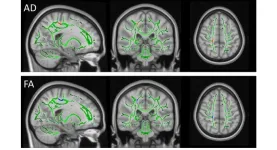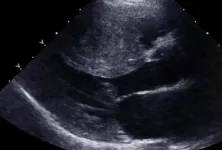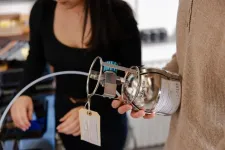As sad as it is, child maltreatment continues to be a prevalent global social issue. Recent studies have revealed that up to one billion children aged two to 17 experience some form of abuse or neglect every year. While it is possible that some children may eventually overcome these experiences, abundant evidence indicates that child abuse can continue to have a lasting negative impact on brain and mental development, even as these children age. Therefore, prioritizing the prevention of this menacing behavior is crucial.
One way to pursue this goal is to focus on the underlying causes that lead to the perpetuation of abuse, especially by parents and caregivers. Recent advancements in brain imaging have, in fact, enabled experts to pinpoint abnormalities in very specific brain structures and functions among neglectful or maltreating mothers. Unfortunately, such studies are few and far between, given the sensitive nature of the topic and the difficulties in getting consent from potential participants.
To address this knowledge gap, a research team led by Assistant Professor Sawa Kurata from the Research Center for Child Mental Development, University of Fukui, Japan, undertook an exploratory study using diffusion tensor imaging (DTI) to analyze the white-matter structural features of the brain in maltreating mothers. Their findings were published in volume 14 of the journal Scientific Reports on March 7, 2024. DOI:10.1038/s41598-024-53666-0
One of the driving forces behind this study was Kurata’s encounters with both victims and perpetrators of child abuse. As Assistant Professor Kurata puts it, “In my work as a pediatrician, I have worked with both abused children and abusive caregivers. Hearing these stories about uncontrollable hitting and verbal abuse directed at children made me undertake this research. Moreover, caregivers themselves often suffer due to their inability to stop abusive behaviors. Thus, we conducted this study with the belief that by supporting the caregivers, we could safeguard them as well as the children in their care.”
With an aim to shed light on this complex and unexplored subject, Kurata and colleagues conducted an exploratory case-control DTI analysis involving 11 maltreating mothers as well as 40 age-matched control mothers. They employed this modern imaging modality to extract information about microstructural features of the brain, such as the complexity, integration, axonal density, and variability, based on the diffusion of water molecules in the tissue. They could quantify the patterns of water diffusion in terms of its directionality, whether parallel (axial) or perpendicular (radial) to the fiber, and the ratio between both (termed as ‘fractional anisotropy’ or FA).
Interestingly, upon comparing the DTI images, the team observed significantly reduced axial diffusivity (AD) in maltreating mothers in a region of the brain called the right corticospinal tract (CST). A similar trend of lower FA was also observed. “The CST is crucial for voluntary movements. Maltreating mothers could have voluntary movement vulnerability. Previous studies confirm this, showing that maltreating mothers have difficulty controlling movement force and experience dysregulation in autonomic responses. Previous studies have also reported that lower FA values in CST are associated with impulsivity. Therefore, lower CST integrity could be linked to impulsivity as a background factor in maltreating mothers. We speculate that reduced AD and FA values of their CSTs may explain the neurobiological mechanism underlying these behaviors,” explains Kurata.
In addition to the DTI analysis, the researchers also explored whether the differences in CST features were associated with the mothers’ experiences of childhood abuse. Based on the Childhood Trauma Questionnaire, the team found that reduced AD and FA were significantly associated with higher questionnaire scores in all participants. Considering that traumatic experiences during this period may lead to atypical development in white-matter structures, it is possible that maltreating mothers form part of an intergenerational chain of childhood abuse, which manifests itself in these measurable ways.
Overall, the findings of this study suggest potential physiological causes underlying child abuse. These insights represent a crucial first step towards the development of effective prevention strategies for this widely prevalent and disturbing issue. “Based on our findings, maltreating mothers seem to be vulnerable to the control of force during actual voluntary movements. Further investigations into the topic may help in the development of evidence-based interventions and treatment policies,” says Kurata. Adding further, she says, “In the future, we plan to promote collaboration between medicine, pharmacy, and engineering to develop new treatments, including drugs, psychotherapy, and medical devices, for parents with child-rearing difficulties. This includes the development of devices that can help maltreating caregivers control voluntary muscles and address their childhood traumatic experiences.”
Here's wishing the team the best for their future research efforts directed towards eradicating this menacing issue and steering the world towards freedom from child abuse.
Author
Sawa Kurata, Shota Nishitani, Natasha Y. S. Kawata, Akiko Yao, Takashi X. Fujisawa & Hidehiko Okazawa
About University of Fukui, Japan
The University of Fukui is a preeminent research institution with robust undergraduate and graduate schools focusing on education, medical and science, engineering, and global and community studies. The university conducts cutting-edge research and strives to nurture human resources capable of contributing to society on the local, national, and global level.
Website: https://www.u-fukui.ac.jp/eng/
About Assistant Professor Sawa Kurata from University of Fukui, Japan
Sawa Kurata is an Assistant Professor at the Research Center for Child Mental Development, University of Fukui. Kurata is currently working on a project involving brain image analysis to establish treatment and interventions for mothers who suffer from child bearing problems. Kurata has published significant research, including a notable paper on the influence of the COVID-19 pandemic on parenting stress. Having worked as a pediatrician for over a decade, Kurata now works closely with abused children as well as their maltreating parents and recognizes the need for interventions targeting both trauma treatment and caregiver support. Driven by a mission to help eradicate abuse from society, Kurata's ongoing research focuses on the dynamics of caregiver behavior and its impact on child welfare.
Funding information
This study was supported by AMED under grant number 20gk0110052, the Strategic Budget to Realize University Missions under grant number FY 2022, JSPS KAKENHI Scientific Research under grant number 22K02432, Grant-in-Aid for Transformative Research Areas—Platforms for Advanced Technologies and Research Resources “Advanced Bioimaging support” (22H04926), and Life Cycle Medicine from Faculty of Medical Sciences, University of Fukui.
Media contact:
Naoki Tsukamoto
University of Fukui PR center
sskoho-k@ad.u-fukui.ac.jp
END







